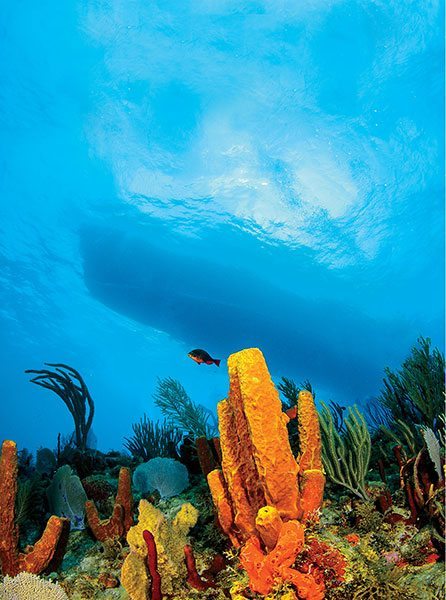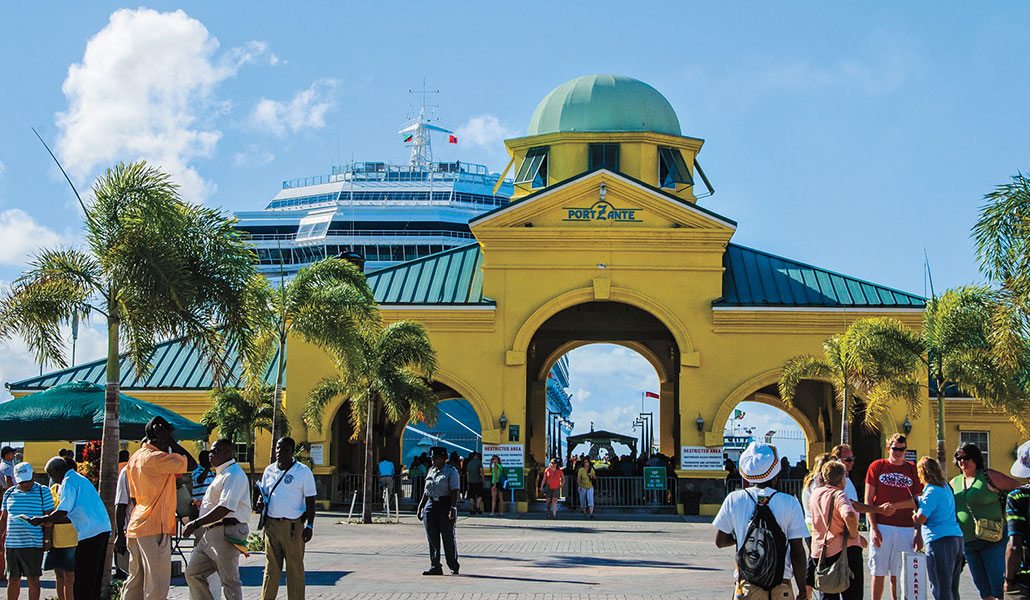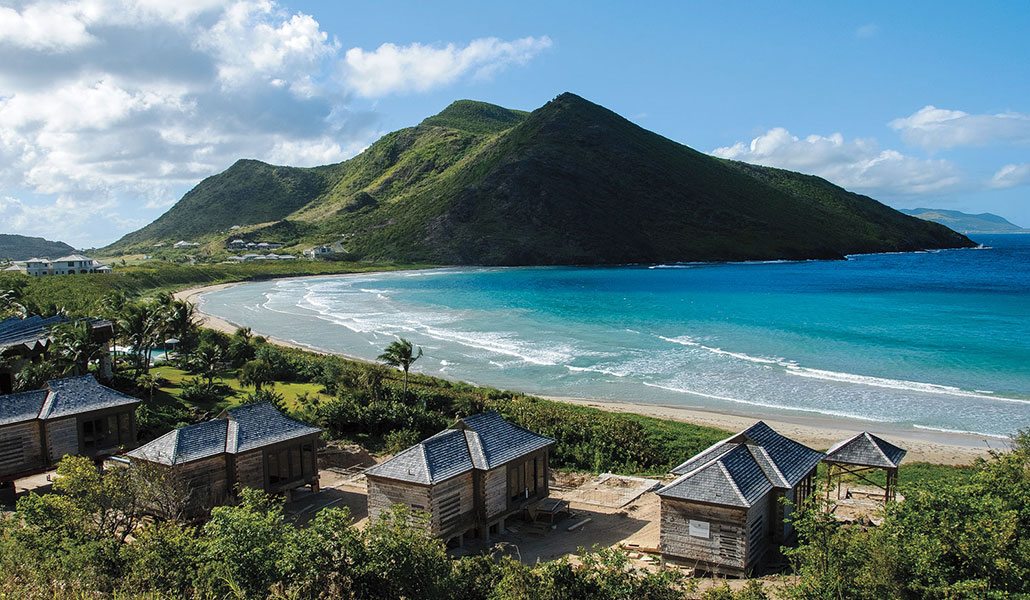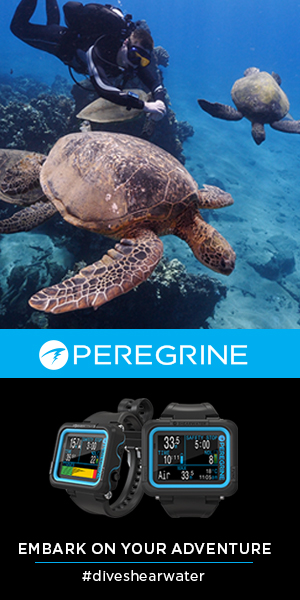St. Kitts is rapidly emerging as a top vacation hot spot in the eastern Caribbean. Nestled between Antigua and St. Maarten, the lush landscape is dominated by the extinct volcano of Mount Liamigua, while the shorelines are a study in contrast — beautiful black volcanic sand and powdery white-sand beaches. Visitors will find that nature’s incredible beauty is intoxicating to the senses, as are adventures such as ziplining above the rain forest canopy or diving into the crystal waters of the Caribbean. Exploring fascinating historical sites such as Wingfield Estates, hiking the lush rain forest or leaving footprints on picturesque, pristine beaches are just as appealing. These adventures, and many more, all a wish away, await eager vacationers who journey to this friendly, inviting island.
Patronage and History
The peaceful ambience of St. Kitts belies its conflicted past. Not surprisingly, the island’s recorded history began with Columbus’ second voyage to the Caribbean; he is credited with naming the island St. Christopher in honor of the patron saint of travelers. Long before Columbus arrived, several native cultures, including the Siboneys, Arawaks and Carib Indians, called the island home. The natives named the island Liamigua, meaning fertile soil.
The first English settlement, Old Road, was established in 1624 when Sir Thomas Warner brought his family and 14 friends to the shores of St. Kitts. During this time, the English changed the name to St. Kitts, short for St. Christopher. Less than two years later the French arrived, waging bloody battles with native inhabitants. The area known as Bloody Point commemorates one of the worst encounters.
After decimating the native population, the French and English began to expand the sugar and tobacco plantations. During the centuries that followed, the English, French and Spanish fought over ownership of the thriving plantations. Between 1664 and the signing of the Treaty of Versailles in 1783, ownership bounced between England and France. One of their most famous battles took place at Brimstone Hill Fortress in 1782 when the French attacked the fort from all sides. The determined English fought for nine months before surrendering, but in the end the Treaty of Versailles permanently placed St. Kitts under English rule.
England placed St. Kitts and Nevis under the same administrative umbrella in 1880. On September 19, 1983, Britain granted independence to the sister islands. Still members of the Commonwealth, they enjoy an independent, stable government while continuing many British traditions.
Black-Sand Beaches and Banyon Trees
Born from ancient volcanic activity, St. Kitts has rich soil and a stunning topography. Rising 3,792 feet (1,152 m) into the air, Mount Liamigua (lee-a-MWEE-ga) is the island’s highest mountain and the highest point in the Lesser Antilles. An impressive part of the Central Forest Reserve covers the mountain and contains 25 percent of the island’s entire landmass. St. Kitts is proud of the fact that the rain forest is expanding, not shrinking, like so many of the world’s rain forests. Reduction of sugarcane fields along with conservation efforts have played a major role in this modern-day phenomena. Today, restrictions prevent development from extending past a specific elevation on mountains, preserving the beneficial rain forest and the beauty of the land.
Bromeliads, orchids and other exotic flowers grow in abundance in the forest, filling the air with their sweet fragrances. Banyon trees reach skyward as their unique root system forms new trunks while reaching downward to meet the soil. Scenic nature trails allow hikers a glimpse at green vervet monkeys and scurrying mongoose families as well as green-crested hummingbirds, colorful iridescent butterflies and other rare birds.
St. Kitts is poised between the Atlantic Ocean to the north and the Caribbean to the south. In contrast to the calm azure water of the Caribbean, the Atlantic coast exudes an untamed, desolate beauty as waves relentlessly crash against the lava rocks. The rugged appeal of the four-mile-long (6.4 km) northern coast has made it a favorite location for horseback riding.
More than a dozen beaches, each with a unique beauty and appeal, are concentrated at the southeastern and southwestern end of the peninsula. Some beaches consist of glistening black sand while others are covered with spectacular powdery-white sand. Restaurants and bars line some of the beaches while others are landscaped only by nature.
When the production of sugar was halted in 2005, St. Kitts began in earnest to gear its economy toward the development of tourism. The goal was — and still is — to modernize while maintaining the authenticity of the island in an attempt to appeal to tourist and business markets. As a result, new properties and new offerings are emerging. One example is the new face of Port Zante. Other examples include all-encompassing luxury resorts with five-star hotels, restaurants, world-class spas, tennis courts and golf courses with breathtaking panoramic ocean views of neighboring islands. The direction of current eco-friendly development continues to play a major role in making the possibility of sustainable tourism a reality.
 St. Kitts Diving
St. Kitts Diving
St. Kitts diving is beautiful and diverse with dive sites for novice and advanced divers to explore. Multilevel reefs created by numerous shoals, canyons, steep walls and caverns are home to an amazing variety of Caribbean flora and fauna. Protected reefs are typically on the Caribbean side of the island. Most are only minutes from shore, making the sites easily accessible. One especially enjoyable location is Sandy Point, a national marine park near Brimstone Hill Fortress. Two popular mooring sites are Paradise Reef and Anchors Away, which consist of large coral heads and swim-through canyons. On Anchors Away, divers search between coral fingers for at least five identifiable anchors embedded in the reef. Dropped during skirmishes between the French, English and Spanish, the anchors are camouflaged with colorful corals and tube sponges, making them a challenge to spot. Monkey Shoals, a shallow limestone reef between St. Kitts and Nevis, is home to rays, occasional nurse sharks and flying gurnards, which, if disturbed, will spread their beautiful fan-shaped fins and gracefully glide across the seafloor.
Friars Bay Reef, only a mile (1.6 km) from shore, is an easy dive site for novice divers, while Nags Head, St. Kitts’ only drift dive, is for experienced divers. Located on the southern tip of the peninsula, strong currents are common where the Caribbean clashes with the Atlantic. Multilevel diving is possible at two sites: the Rocks with three huge boulders, and Frigate Bay Reef, located less than a mile west of Friars Bay beach. Bird Rock offers easy beach diving where common sightings include eagle rays, nurse sharks and sea horses. On all of the dives, don’t be surprised to see some of the friendliest hawksbill turtles in the Caribbean; it is not unusual for two or three turtles to “hang out” with and delight divers.
More than 400 wrecks of galleons, frigates and freighters dating back to the 17th century have been charted by the St. Kitts Maritime Archaeological Project. Some of the more recent wrecks are great dive sites, including the River Taw, Corinthian and the Talata. After sinking in 1985, the 144-foot-long (44 m) River Taw remained upright on a sandy bottom; in 1989, Hurricane Hugo broke the ship in half. Today the wreck is an excellent site for all divers. No penetration of the wreck is allowed; however, the exterior provides a stunning backdrop for photographers. The Corinthian is a tugboat intentionally sunk in 1995. It sits upright in 65 feet (20 m) of water. The wreck is incredibly beautiful, with long strands of soft coral covering the interior and wheelhouse from ceiling to floor. Be sure to check out the elaborately adorned propeller.
Touring Basseterre
The heart of St. Kitts is Basseterre, the island’s capital. Located on the southern coast, the town is reminiscent of the Old World Caribbean, with much of the colonial architecture still preserved. About 13,000 people reside in the capital. Locals greet vacationers with a warm smile and a welcoming hello. Basseterre is an exciting point of arrival for visitors. Port Zante, a deep-water port and cruise ship dock, accommodates three to four cruise ships every week. When visitors disembark, they enter the newly remodeled square of Port Zante, lined with inviting shops, boutiques, duty-free shops and art galleries. More shops are located at Pelican Mall, a small arcade resembling a traditional Caribbean street, as well as the courtyard radiating from the octagon-shaped traffic circle known as the Circus.

Shopping is not the only attraction in Basseterre. Take time to enjoy a leisurely stroll through Independence Square, once a slave market and now the site of beautiful gardens. The historical St. George Anglican Church, originally built by the French, is an impressive landmark. The National Museum, which houses an eclectic collection reflecting the historical and cultural development of St. Kitts, will especially appeal to history buffs.
Excellent restaurants, incredible ocean views and delicious cuisine create enjoyable dining experiences throughout the island. International and local dishes, including johnnycakes, salt fish, and roti filled with curried chicken, are prepared with definitive Caribbean flavors.
Time Traveling
Whether by land or by sea, island adventures are plentiful. One popular tour takes place on the St. Kitts Scenic Railway. Visitors hop aboard the “sugar train” and travel around the island on a narrow gauge track completed in 1926 to transport sugarcane from the field to the central factory. The newest adventure — ziplining — invites visitors to buckle up for a thrilling ride 250 feet (76 m) above the forest canopy and an exciting finish on the grounds of the Wingfield Estate.
Golf has become a popular sport on the island, as has tennis and horseback riding. Those who prefer sand and surf will enjoy kayaking, snorkeling and scuba diving, as well as windsurfing and parasailing.
Exploring historical sites sprinkled across St. Kitts is like a journey back in time. Sugar mill ruins rising above the forest are easily noticeable, but hidden in the forest are many other engaging discoveries. Brimstone Hill Fortress National Park is one of the most famous sites on the island. Designed by the English in 1690, Brimstone Hill Fortress, perched almost 800 feet (242 m) above sea level, was built to defend Sandy Point, a strategic landing and anchorage site for trade and shipping. Made of black volcanic stone, or brimstone, the walls of Fort George were built 7 feet (2 m) thick; 49 cannons stand guard over the fort. Once called “The Gibraltar of the West Indies,” it is now designated as a UNESCO World Heritage Site.
One of the most exciting historical projects is the restoration of Wingfield Estate, which includes Romney House and Caribelle Batik. More than a decade of excavation has proven that Wingfield was indeed the first land grant made in the West Indies in 1625. Wingfield was also the first working estate, producing tobacco, indigo, sugarcane and rum in the mid-17th century.
Included on the grounds of the estate are Romney Manor and the home of Caribelle Batik, a fabric made with beautiful bright colors and imaginative designs. Enjoy a demonstration of the batik process, then stroll through the magnificent gardens or rest under the island’s largest Saman tree, dating back more than 350 years. For a relaxing stop, visit the Nirvana Restaurant on the grounds of the authentically restored Fairview Great House and enjoy a West Indies-style afternoon tea with scrumptious pastries, delicious scones and specially brewed tea. Before leaving, wander through the attractive botanical gardens.
Rocking and Reveling
Caribbean islanders love to celebrate, and St. Kitts is no exception. One of the most exciting events is the annual National Carnival. From mid-December to the first part of January, Kittitians don their party attire and celebrate to the rhythm of Caribbean music. The island extravaganza includes pageants, the selection of the National Carnival Queen and exuberant street parties filled with locals in brightly colored costumes. Calypso music, dancing and folklore presentations are also part of the festivities. On December 25, Christmas is observed; Boxing Day follows on the 26th. At dawn on the 26th, J’Ouvert Morning ushers in a massive celebration as thousands of revelers fill the streets of Basseterre. Steel drum bands and sound systems pump up the music for jamming and dancing through the streets. Celebrations continue from dawn until the last reveler goes home.
St. Kitts Music Festival is one of the most entertaining events on the island. Musicians throughout the Caribbean and the world are attracted to the festival. Energetic performers play crowd-pleasing hits, including a delightful mix of musical genres such as soul, reggae and rhythm and blues. Independence festivities are held in mid-September when Heritage Week proudly salutes the history of St. Kitts.
Vacationing on the exotic island of St. Kitts will awaken the senses of all who come to experience the lure of the Caribbean. Whether participating in the joy of Carnival, hiking the highest peak in the Lesser Antilles, stepping back in time through history tours or soaking up the local culture, visitors to this enchanting island will discover that their vacation wishes have become an exciting reality.





